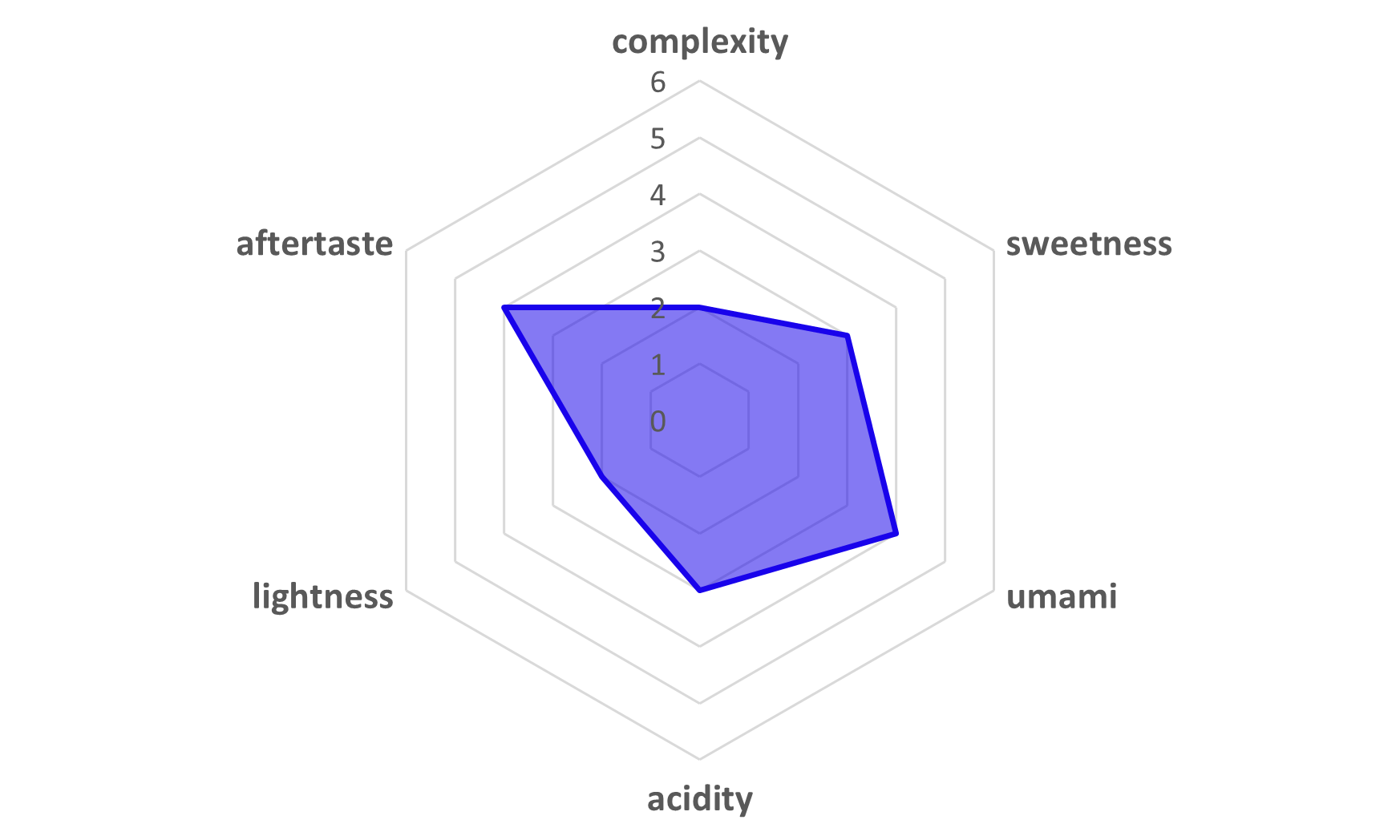N/A
An indicator of the sweetness or dryness of sake. Generally, a negative value indicates sweetness, while a positive value indicates dryness.
A numerical expression of the total amount of acidity. A high acid level indicates sharpness and richness, while a low indicates lightness and sweetness.
The ratio of rice remaining after scraping from the outside. By shaving off the surface layer, sake can be made with a distinctive aroma and free of impurities.
"The nose is rich with burnt butter and dairy products, like raisin butter sandwich or crème brûlée. It also has a ladylike sweetness and fruitiness, like black fig. The mouthfeel is light and the balance between sweetness and acidity is very good. It can be enjoyed with aromatic hotpot dishes or with light sashimi. The calm aftertaste of dried fruit, which appears over time, lasts long enough to remind one of an after-dinner drink. Recommended served cold or at room temperature."
Professional French Chief & YUKARI Special Ambassador
"Mainly banana and Japanese citrus notes are harmonised with dairy notes such as apricot and slightly fermented butter, as well as green notes such as mitsuba and grass herb. As the temperature rises, the aromas of apricots and berries with abundant acidity emerge. The overall impression on the palate is flat, with no unevenness. It starts with a light mouthfeel typical of summer sake, and the fine acidity and the fresh, short aftertaste give it a lively impression. The recommended temperature range is 10°C or lower. Strongly chilled, in INAO glasses or small ceramic straight glasses."
Sommelier of Sake / Sake Diploma & YUKARI Special Ambassador








